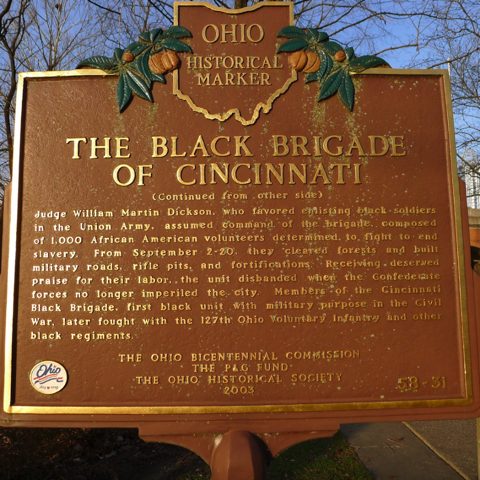
According to the description, ‘Judge William Martin Dickson, who favored enlisting black soldiers in the Union Army, assumed command of the brigade, composed of 1,000 African American volunteers determined to fight to end slavery. From September 2-20, they cleared forests and built military roads, rifle pits, and fortifications. Receiving deserved praise for their labor, the unit disbanded when the Confederate forces no longer imperiled the city.’
This version of the story is incomplete and in its omission, misleading.
The sign is toward the east end of Sawyer Point Park. But if you go a mile west, to the part of the park opposite the Moerlein Lager House, you’ll come to a larger memorial.
There are a series of sculptured plaques interspersed with poetry.
On September 2, 1862, when white volunteers enlisted, black residents were told they were not welcome.
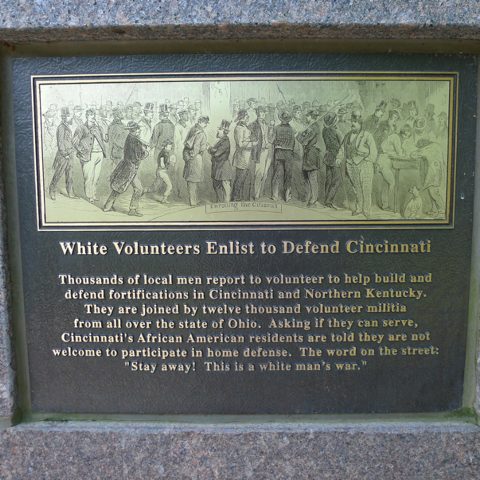
White shopkeepers,
farmers, traders
have assembled
of their own accord,
under one flag
with one sword.
But we are not welcome
to defend our home
because our skin
is black.
– Tyrone Williams
Then, on September 3rd, the ‘locally organized Provost Guard’ forcibly pressed Black men into service by whatever means necessary. Hundreds of Cincinnati’s Black residents were dragged from their homes.
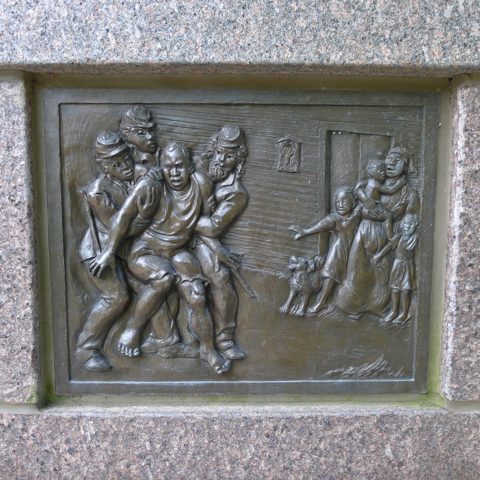
Who are you?
What do you want?
My husband is
a free man!
Leave him be!
Where are you
taking him?
My God! My God!
Somebody help us!
– Tyrone Williams
The men were herded into mule pens on the banks of the Ohio River and ordered to squat. The guards were told, “Shoot the first one who rises.”
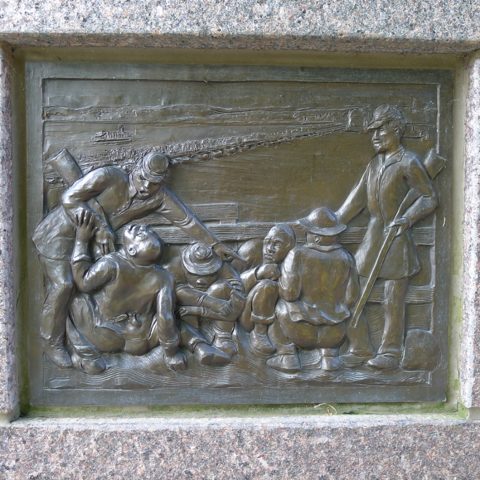
Don’t sit.
Don’t stand.
We can only
crouch, hunker.
Halfway positions,
halfway men.
Not slaves,
not yet free.
– Tyrone Williams
The Cincinnati Daily Gazette published news of the atrocity and the result was that ‘the men are immediately returned to their homes to allay the fears of their families and to prepare themselves for voluntary service. Those who are willing are asked to report at five o’clock the next morning…’
Return these men
to the free state
of Ohio.
Return them to
work and family,
free to remain
at home or to
return here.
– Tyrone Williams
The next morning, ‘over seven hundred men report for duty, three hundred more than had been previously abducted by the Provost Guard.’
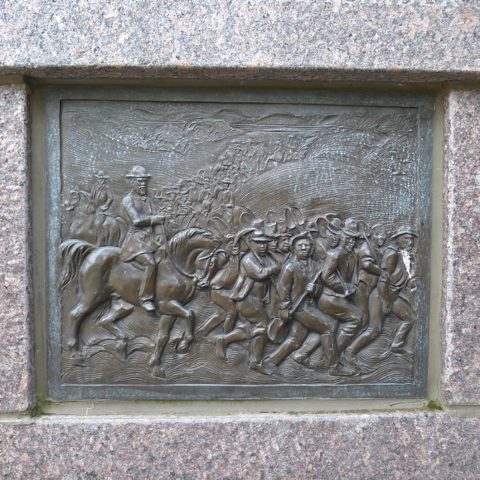
We return on
this new morning,
twice as many
strong.
Ready to defend
our city and home.
Ready to safeguard
our families
and future.
Ready to believe
in unity.
– Tyrone Williams
When the Confederate troops arrived, they noted the overwhelming fortifications.
A grey cap
with field glasses
scans the front line,
stops on me.
I stare back
I want to shout
“Black men
built these forts!”
– Tyrone Williams
The Confederate forces withdrew on September 13th.
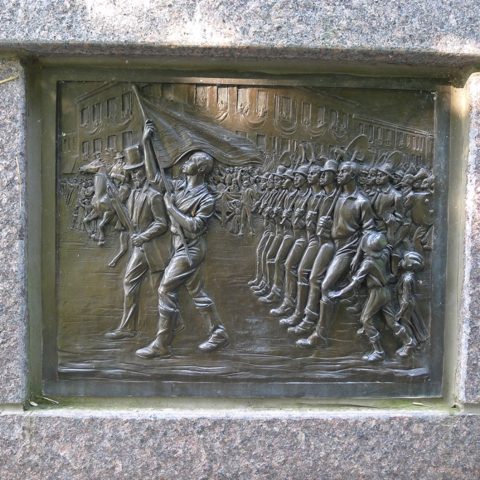
We left as men,
returned as heroes
to doffed hats,
waving hands.
Cheered by the
colorful crowd at
Fifth and Broadway,
we are citizens
knighted by a
sword not used.
– Tyrone Williams
Perspective
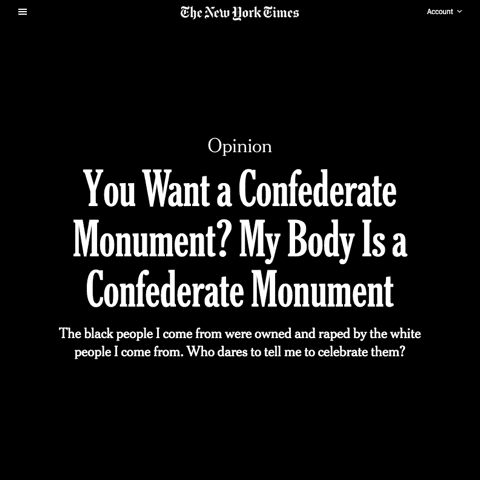
Caroline Randall Williams, The New York Times
Chewing the Cud of Good

Thankful for evolving attitudes around what should be memorialized and what should not.
This is a powerful story, and thank you for sharing it. I’m glad Cincinnati has the plaques to teach us.
Chris, I’m proud of Cincinnati for building the monument but… 150 years? That’s a long time to wait to recognize an atrocity. Then again, that’s what the country is debating right now, isn’t it?